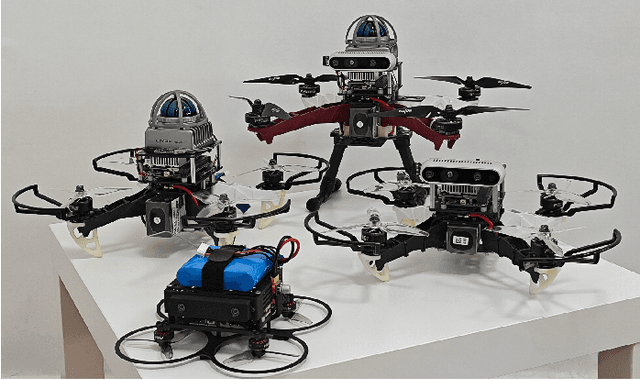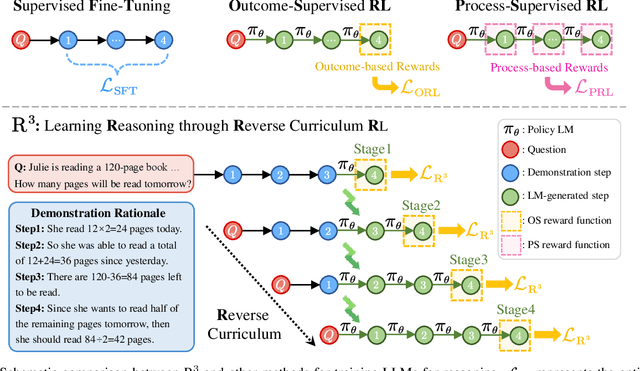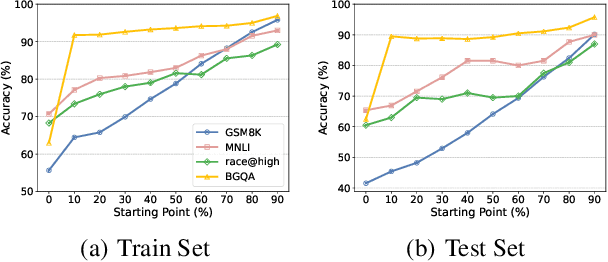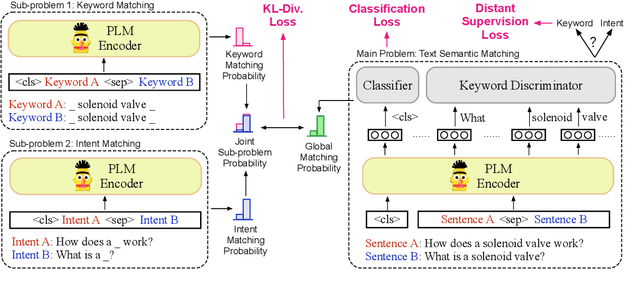Junzhe Wang
PER-DPP Sampling Framework and Its Application in Path Planning
Mar 10, 2025Abstract:Autonomous navigation in intelligent mobile systems represents a core research focus within artificial intelligence-driven robotics. Contemporary path planning approaches face constraints in dynamic environmental responsiveness and multi-objective task scalability, limiting their capacity to address growing intelligent operation requirements. Decision-centric reinforcement learning frameworks, capitalizing on their unique strengths in adaptive environmental interaction and self-optimization, have gained prominence in advanced control system research. This investigation introduces methodological improvements to address sample homogeneity challenges in reinforcement learning experience replay mechanisms. By incorporating determinant point processes (DPP) for diversity assessment, we develop a dual-criteria sampling framework with adaptive selection protocols. This approach resolves representation bias in conventional prioritized experience replay (PER) systems while preserving algorithmic interoperability, offering improved decision optimization for dynamic operational scenarios. Key contributions comprise: Develop a hybrid sampling paradigm (PER-DPP) combining priority sequencing with diversity maximization.Based on this,create an integrated optimization scheme (PER-DPP-Elastic DQN) merging diversity-aware sampling with adaptive step-size regulation. Comparative simulations in 2D navigation scenarios demonstrate that the elastic step-size component temporarily delays initial convergence speed but synergistically enhances final-stage optimization with PER-DPP integration. The synthesized method generates navigation paths with optimized length efficiency and directional stability.
UniQuad: A Unified and Versatile Quadrotor Platform Series for UAV Research and Application
Jun 30, 2024


Abstract:As quadrotors take on an increasingly diverse range of roles, researchers often need to develop new hardware platforms tailored for specific tasks, introducing significant engineering overhead. In this article, we introduce the UniQuad series, a unified and versatile quadrotor platform series that offers high flexibility to adapt to a wide range of common tasks, excellent customizability for advanced demands, and easy maintenance in case of crashes. This project is fully open-source at https://hkust-aerial-robotics.github.io/UniQuad.
AgentGym: Evolving Large Language Model-based Agents across Diverse Environments
Jun 06, 2024



Abstract:Building generalist agents that can handle diverse tasks and evolve themselves across different environments is a long-term goal in the AI community. Large language models (LLMs) are considered a promising foundation to build such agents due to their generalized capabilities. Current approaches either have LLM-based agents imitate expert-provided trajectories step-by-step, requiring human supervision, which is hard to scale and limits environmental exploration; or they let agents explore and learn in isolated environments, resulting in specialist agents with limited generalization. In this paper, we take the first step towards building generally-capable LLM-based agents with self-evolution ability. We identify a trinity of ingredients: 1) diverse environments for agent exploration and learning, 2) a trajectory set to equip agents with basic capabilities and prior knowledge, and 3) an effective and scalable evolution method. We propose AgentGym, a new framework featuring a variety of environments and tasks for broad, real-time, uni-format, and concurrent agent exploration. AgentGym also includes a database with expanded instructions, a benchmark suite, and high-quality trajectories across environments. Next, we propose a novel method, AgentEvol, to investigate the potential of agent self-evolution beyond previously seen data across tasks and environments. Experimental results show that the evolved agents can achieve results comparable to SOTA models. We release the AgentGym suite, including the platform, dataset, benchmark, checkpoints, and algorithm implementations. The AgentGym suite is available on https://github.com/WooooDyy/AgentGym.
VANP: Learning Where to See for Navigation with Self-Supervised Vision-Action Pre-Training
Mar 12, 2024



Abstract:Humans excel at efficiently navigating through crowds without collision by focusing on specific visual regions relevant to navigation. However, most robotic visual navigation methods rely on deep learning models pre-trained on vision tasks, which prioritize salient objects -- not necessarily relevant to navigation and potentially misleading. Alternative approaches train specialized navigation models from scratch, requiring significant computation. On the other hand, self-supervised learning has revolutionized computer vision and natural language processing, but its application to robotic navigation remains underexplored due to the difficulty of defining effective self-supervision signals. Motivated by these observations, in this work, we propose a Self-Supervised Vision-Action Model for Visual Navigation Pre-Training (VANP). Instead of detecting salient objects that are beneficial for tasks such as classification or detection, VANP learns to focus only on specific visual regions that are relevant to the navigation task. To achieve this, VANP uses a history of visual observations, future actions, and a goal image for self-supervision, and embeds them using two small Transformer Encoders. Then, VANP maximizes the information between the embeddings by using a mutual information maximization objective function. We demonstrate that most VANP-extracted features match with human navigation intuition. VANP achieves comparable performance as models learned end-to-end with half the training time and models trained on a large-scale, fully supervised dataset, i.e., ImageNet, with only 0.08% data.
Training Large Language Models for Reasoning through Reverse Curriculum Reinforcement Learning
Feb 08, 2024



Abstract:In this paper, we propose R$^3$: Learning Reasoning through Reverse Curriculum Reinforcement Learning (RL), a novel method that employs only outcome supervision to achieve the benefits of process supervision for large language models. The core challenge in applying RL to complex reasoning is to identify a sequence of actions that result in positive rewards and provide appropriate supervision for optimization. Outcome supervision provides sparse rewards for final results without identifying error locations, whereas process supervision offers step-wise rewards but requires extensive manual annotation. R$^3$ overcomes these limitations by learning from correct demonstrations. Specifically, R$^3$ progressively slides the start state of reasoning from a demonstration's end to its beginning, facilitating easier model exploration at all stages. Thus, R$^3$ establishes a step-wise curriculum, allowing outcome supervision to offer step-level signals and precisely pinpoint errors. Using Llama2-7B, our method surpasses RL baseline on eight reasoning tasks by $4.1$ points on average. Notebaly, in program-based reasoning on GSM8K, it exceeds the baseline by $4.2$ points across three backbone models, and without any extra data, Codellama-7B + R$^3$ performs comparable to larger models or closed-source models.
The Rise and Potential of Large Language Model Based Agents: A Survey
Sep 19, 2023



Abstract:For a long time, humanity has pursued artificial intelligence (AI) equivalent to or surpassing the human level, with AI agents considered a promising vehicle for this pursuit. AI agents are artificial entities that sense their environment, make decisions, and take actions. Many efforts have been made to develop intelligent agents, but they mainly focus on advancement in algorithms or training strategies to enhance specific capabilities or performance on particular tasks. Actually, what the community lacks is a general and powerful model to serve as a starting point for designing AI agents that can adapt to diverse scenarios. Due to the versatile capabilities they demonstrate, large language models (LLMs) are regarded as potential sparks for Artificial General Intelligence (AGI), offering hope for building general AI agents. Many researchers have leveraged LLMs as the foundation to build AI agents and have achieved significant progress. In this paper, we perform a comprehensive survey on LLM-based agents. We start by tracing the concept of agents from its philosophical origins to its development in AI, and explain why LLMs are suitable foundations for agents. Building upon this, we present a general framework for LLM-based agents, comprising three main components: brain, perception, and action, and the framework can be tailored for different applications. Subsequently, we explore the extensive applications of LLM-based agents in three aspects: single-agent scenarios, multi-agent scenarios, and human-agent cooperation. Following this, we delve into agent societies, exploring the behavior and personality of LLM-based agents, the social phenomena that emerge from an agent society, and the insights they offer for human society. Finally, we discuss several key topics and open problems within the field. A repository for the related papers at https://github.com/WooooDyy/LLM-Agent-Paper-List.
RE-Matching: A Fine-Grained Semantic Matching Method for Zero-Shot Relation Extraction
Jun 08, 2023Abstract:Semantic matching is a mainstream paradigm of zero-shot relation extraction, which matches a given input with a corresponding label description. The entities in the input should exactly match their hypernyms in the description, while the irrelevant contexts should be ignored when matching. However, general matching methods lack explicit modeling of the above matching pattern. In this work, we propose a fine-grained semantic matching method tailored for zero-shot relation extraction. Following the above matching pattern, we decompose the sentence-level similarity score into entity and context matching scores. Due to the lack of explicit annotations of the redundant components, we design a feature distillation module to adaptively identify the relation-irrelevant features and reduce their negative impact on context matching. Experimental results show that our method achieves higher matching $F_1$ score and has an inference speed 10 times faster, when compared with the state-of-the-art methods.
Farewell to Aimless Large-scale Pretraining: Influential Subset Selection for Language Model
May 22, 2023Abstract:Pretrained language models have achieved remarkable success in various natural language processing tasks. However, pretraining has recently shifted toward larger models and larger data, and this has resulted in significant computational and energy costs. In this paper, we propose Influence Subset Selection (ISS) for language model, which explicitly utilizes end-task knowledge to select a tiny subset of the pretraining corpus. Specifically, the ISS selects the samples that will provide the most positive influence on the performance of the end-task. Furthermore, we design a gradient matching based influence estimation method, which can drastically reduce the computation time of influence. With only 0.45% of the data and a three-orders-of-magnitude lower computational cost, ISS outperformed pretrained models (e.g., RoBERTa) on eight datasets covering four domains.
Divide and Conquer: Text Semantic Matching with Disentangled Keywords and Intents
Mar 06, 2022



Abstract:Text semantic matching is a fundamental task that has been widely used in various scenarios, such as community question answering, information retrieval, and recommendation. Most state-of-the-art matching models, e.g., BERT, directly perform text comparison by processing each word uniformly. However, a query sentence generally comprises content that calls for different levels of matching granularity. Specifically, keywords represent factual information such as action, entity, and event that should be strictly matched, while intents convey abstract concepts and ideas that can be paraphrased into various expressions. In this work, we propose a simple yet effective training strategy for text semantic matching in a divide-and-conquer manner by disentangling keywords from intents. Our approach can be easily combined with pre-trained language models (PLM) without influencing their inference efficiency, achieving stable performance improvements against a wide range of PLMs on three benchmarks.
 Add to Chrome
Add to Chrome Add to Firefox
Add to Firefox Add to Edge
Add to Edge